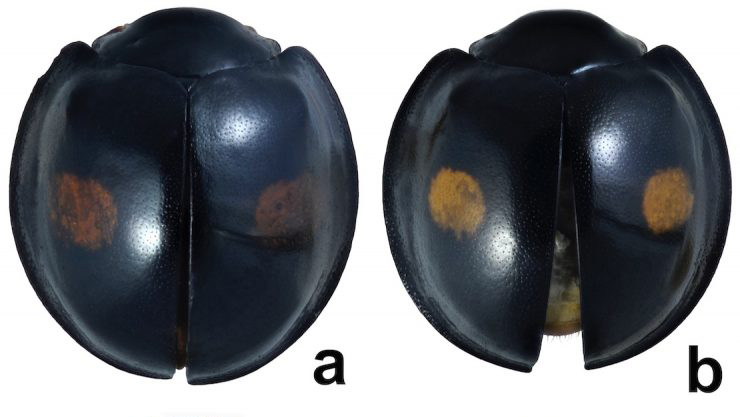
Instects magazine published a scientific article by M.Ya. Benkovskaya and A.O. Benkovsky on the belonging of two populations of ladybugs to one species. The scientific and information portal Search described in detail the essence of the study and posted a comment of the project manager Marina Yakovlevna Benkovskaya, Doctor of Biological Sciences, senior researcher at the A. N. Severtsov Institute of Ecology and Evolution, RAS.
Russian researchers have studied the type of ladybugs - Chilocorus kuwanae, - which has been used to control pests for more than a century. It was previously believed that the native land of this species is Asia, and another related ladybug lives in Europe. However, the study of signs of body structure and statistical processing of the results showed that these two populations belong to the same species. The study demonstrates how important animal identification is using precise quantitative methods and statistical processing. The data obtained also indicate the need for reassessment of the effectiveness of measures related to the importation of individuals of this species. The work was published in the journal Insects. Research is supported by a grant from the Russian Science Foundation.
“For the first time, we have correctly identified the type of insect used by people for a long time. Studies have shown that the import of ladybugs from Asia to Europe did not constitute a movement of the species outside its habitat, but consisted only in the release of individuals from one part of the species range to another. In light of this fact, the economic efficiency of using this species should be reassessed, ”says project manager Marina Benkovskaya, Doctor of Biological Sciences, senior researcher at the A. N. Severtsov Institute of Ecology and Evolution, Russian Academy of Sciences (Moscow).
The biological method of pest control is one of the most promising ways of plant protection, widely used in agriculture and forestry. The basic principle is to restrain the mass reproduction of the pest with the help of its natural enemies: specific predators, parasites or pathogens.
For example, some types of ladybugs are specially harvested in certain regions, bred in laboratories and released to agricultural land in other areas. This approach reduces the use of pesticides and contributes to the preservation of human health. But the use of biological control methods is not an easy task. This technology is based on knowledge of the ecological and physiological characteristics of the pest itself and its natural enemy. First of all, of course, specialists need to correctly determine the species. A study by Russian scientists made it possible for the first time to correctly identify the ladybug Chilocorus kuwanae.
It was previously believed that initially the species lived only in Asia.
From there, for more than a century, individuals have been imported to Europe and other parts of the world to fight against scale insects. These insects from the order Semi-winged, also known as coccids, feed on plant juices, and therefore are dangerous pests of fruit, forest and ornamental crops. However, no one has so far tried to carefully compare Ch. kuwanae with similar species of ladybugs of the same genus. It was previously noted that this species has much in common with the widespread Ch. renipustulatus.
Their native habitats hardly overlap: Ch. kuwanae is found in the Primorsky Territory, on Sakhalin and the Kuril Islands, in Japan, China and the Korean Peninsula, and Ch. renipustulatus is distributed in Europe, Central Asia, the Caucasus, Mongolia and Siberia.
Russian scientists studied a large number of samples presented in the collections of museums and institutes of the world, and conducted a statistical analysis of the variability of the external structure
depending on the habitat of ladybugs. Researchers compared 107 instances of Ch. kuwanae, collected in Japan and Sakhalin, with 174 copies of Ch. renipustulatus collected in Europe.
Scientists chose 17 features that describe the size and proportions of the body of ladybugs, which different authors previously cited to distinguish between these species, and made measurements with subsequent statistical processing of the results. The researchers found that there were no significant differences between the two species, i.e. Ch. kuwanae and Ch. renipustulatus are, in truth, the same species.
This example shows how important the careful identification of insect species used to control pests is, since genetic methods do not replace, but complement the study of the structure of organisms. In addition, this study once again demonstrated that the conclusions about the body belonging to a particular species or genus must be statistically confirmed.
